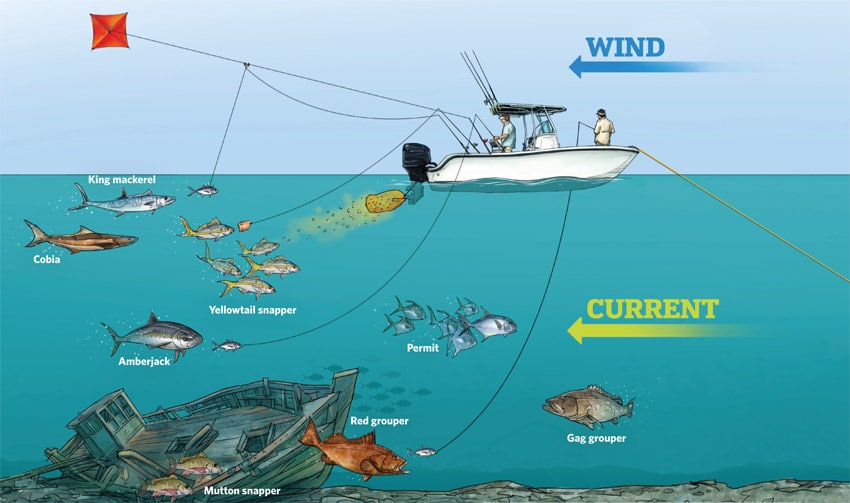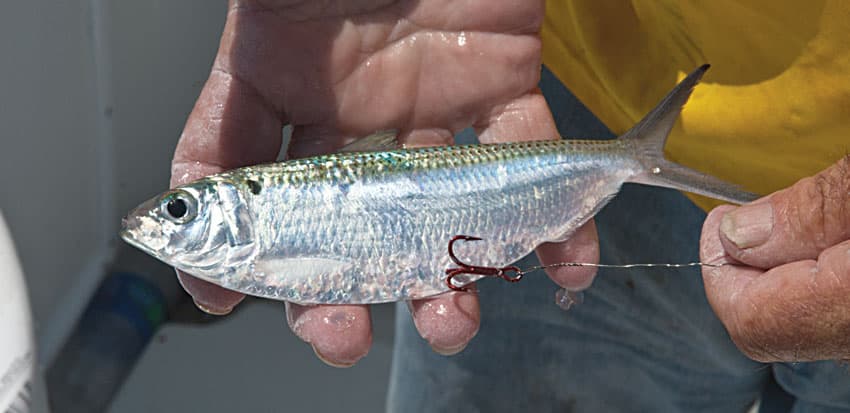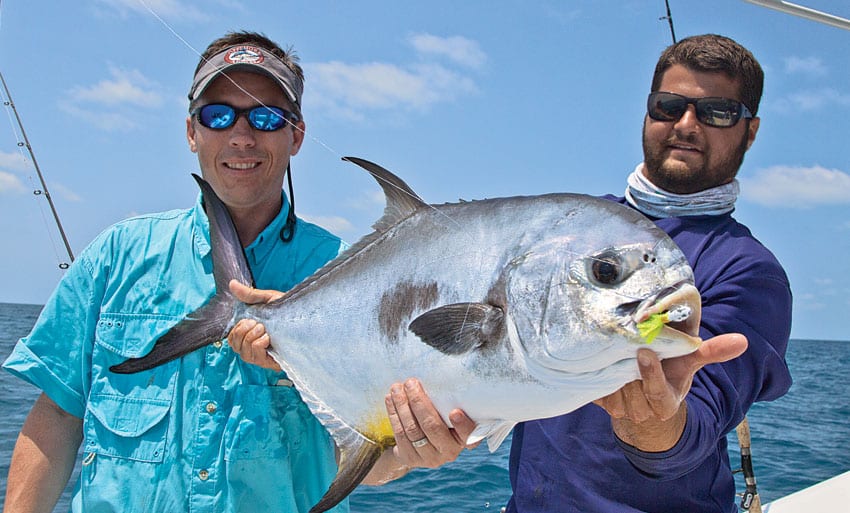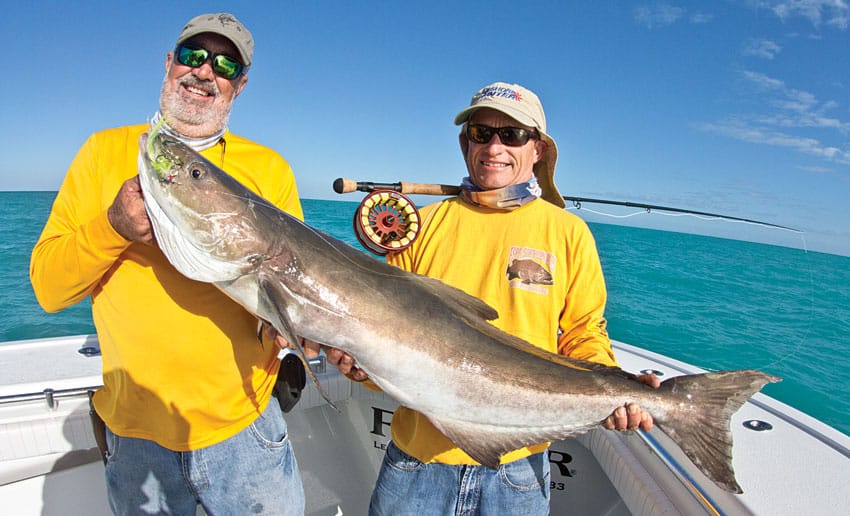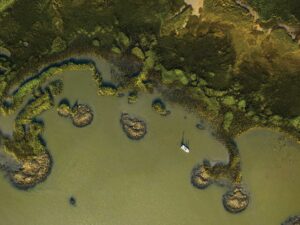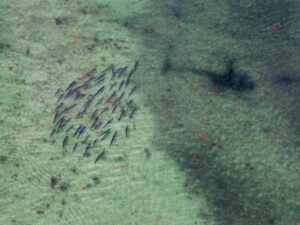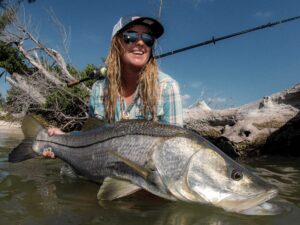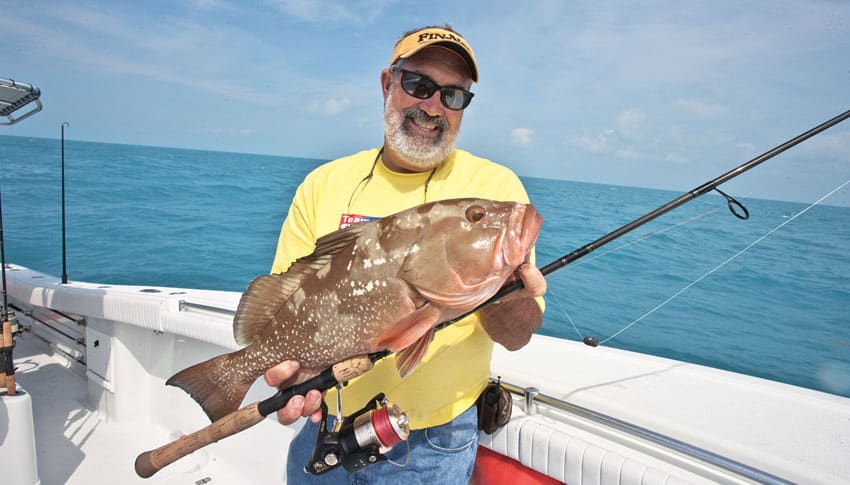
Key West offers more saltwater fishing opportunities than just about anywhere else in the United States. The diversity of species found there and the various methods you can choose to target them attract fishermen from all over the world, and I’m one of them. This small town lying at the end of the road in the Florida Keys beckons to us all.
In all of the years I’ve fished Key West, I’ve found myself drawn again and again to the numerous shipwrecks that lie north of the island in the Gulf of Mexico. Many different boats and ships have gone down out there over the years, some the victims of World War II mines, others of German torpedoes in that same era, while still others simply sank for whatever reason. These wrecks have a mysterious aura about them and you can find everything from freighters to shrimp boats on the bottom out there, but no matter what type of boat you come across, it’s certain to be covered with big, hungry fish.
That’s the attraction, and so this past spring I found myself headed north out of Key West yet again with my old friend Capt. Robert “RT” Trosset, who has taken me to a great many of these wrecks over the years and put me on countless awesome fish. A plentiful supply of live bait makes this fishing much more productive, so on the way out, we hit several bait pods with sabikis to load the livewells.
Go for the Bait
In short order, we were hauling up stringers of fat threadfin herring, an excellent bait for wreck fishing, but other bait species work well too. “Threadfins and pilchards are great baits,” RT explained, “but pinfish work well on groupers too. And it’s always a good idea to have a few live crabs along for permit.” After stocking the wells, we ran far into the Gulf in search of a wreck known as the Craig, a sunken shrimp boat.
Once we found it, RT drove the boat in circles to determine the best spot in which to anchor. Then, anchored up-current of the wreck, we put out a chum bag containing a block of frozen chum, pinned a live threadfin to a treble hook on a wire leader, and cast it back into the growing slick.
The threadfin had barely hit the water when a large king mackerel engulfed it and took off. My wife, Poppy, had the fish on and asked Trosset what had taken so long. We had been there all of a minute and a half and were already hooked to our first quality fish of the day, a king of about 25 pounds, which we released.
Big Summer Kings
“The kings run big out here in the summertime,” RT said. “Permit show up on the wrecks after they spawn in April, and you’re liable to find cobia too. There’s more of a mix of fish in the winter months, but year-round you can find gag and red grouper, mutton and mangrove snapper, and on the deeper wrecks near hard bottom, you’ll find yellowtail snapper too.”
You’ll also come across big barracuda, as we discovered after releasing four or five more large kingfish. A huge cuda ate a threadfin in a spectacular boil, and made a series of screaming runs before I finally got it to the boat, where RT released it. Barracuda often get overlooked as gamefish, but that’s a mistake. A big cuda on light tackle makes for great sport. “Cudas are lots of fun on tube lures too,” RT added, and you can also catch kingfish on tubes from time to time.
As the tide slacked, the bite at the Craig waned, so we moved off in search of new opportunities at other wrecks. That’s one of the best parts of fishing the Key West wrecks; you have so many to choose from and you usually don’t have to run far to find another one.
Permit Haven
I’ve caught and released hundreds of permit over Key West wrecks over the years, and while we found them on this particular trip, we couldn’t get them to bite, a rarity in this fishery. No matter, we simply moved on to yet another wreck where we knew fish awaited. This time, we headed for one of the best-known wrecks in the Gulf, Edward Luckenbach, an American freighter sunk accidentally by an Allied mine in July 1942.
The Luckenbach’s location is widely known, but that doesn’t mean it lacks fish. We spent a couple of hours on the wreck and had bent rods the entire time we were there, catching and releasing amberjack, plus more kings and cudas. While we fished, I asked Trosset to explain his methods for targeting the fish that call these wrecks home.
“It’s important to move around if a certain wreck isn’t producing,” he said. “When you get set up over a wreck, frozen block chum is important, especially when the tide is building up. That’s when you’ll find the kingfish and barracudas, but the cobia will come up as the current softens.” In addition to the block chum, Trosset sometimes tosses out handfuls of glass minnows, a particular favorite food of yellowtails, and he will also fish chunks of bonito as bait, with the skin removed.
Cobia and Sharks
Trosset adds that the big bull sharks that inhabit the Gulf often have large schools of cobia tagging along with them. “You should always have a rod rigged and ready to cast at a passing cobia,” he said. Being opportunistic is key when maximizing your opportunities in this situation.
RT often deploys a kite with a live bait or two dangling beneath it, drawing explosive strikes from kingfish on the surface. He likes to drop a live pinfish down on a weighted rig to entice strikes from grouper, African pompano or amberjack, and he usually keeps a couple of rods rigged with top-water lures for casting to fish. There’s typically a lot going on in this kind of fishing and that’s what makes it so much fun.
If you want a sure thing, stick with the live bait. It’s hard to miss when presenting a well-rigged threadfin or pilchard over one of these wrecks, but if you prefer the purity of casting artificials, that works well too. Whether you like the excitement of a surface strike on a top-water plug, or the primal tug you get on the strike when deep jigging, it’s all possible over a wreck. You can even experience all of the above in a single day.
**
Second Generation**
Over the years, we’ve caught more than a dozen different species on Key West wrecks, and some truly large fish. Most of that fishing occurred on Trosset’s boat, and his kids and ours grew up fishing together. Now, RT’s son Chris has become a world-class Key West captain himself, so you have two Trossets to choose from when booking a trip!
At the end of our latest day with RT, Poppy and I had a dozen or more large king mackerels on our score sheet, along with amberjacks, sharks and barracudas. If that sounds like something you’d like to experience firsthand, try Key West wreck fishing. It’s one of the most exciting fisheries found in Florida or anywhere else, and it’s but one aspect of Key West angling, among many others.
The Wrecks of Key West
Many boats have gone to a watery grave near Key West. The GPS numbers on some are well-kept secrets, while others are widely known. The four best-known wrecks are all ships sunk in 1942 by Allied mines. These include:
- Edward Luckenbach, an American freighter.
- Sturtevant, an American four-stack destroyer.
Gunvor (spelled Gunbor on some charts), a Norwegian freighter.
Bosiljka, a Yugoslavian freighter.
The coordinates for these four ships, and for many other wrecks, can be found on this chart:
Waterproof Charts #9F
800-423-9026
www.waterproofcharts.com
Many shrimp boats have sunk out there too, including Cyclops, Craig, Teaser and Pot Boat. These may be marked on charts simply as “wreck,” so trial and error when fishing on your own can sometimes pay big dividends.
Rods: Stout spinning rods capable of applying pressure to large fish and handling 30-pound braid.
Reels: Large-capacity spinning reels with ample drag to handle 30-pound braid.
Line: 20- to 30-pound braid or monofilament.
Leaders: 30- to 50-pound fluorocarbon for permit, snapper and cobia, 60- to 80-pound mono for grouper. Wire leader for king mackerel and barracuda.
Hooks: 3/0 to 5/0 circle hooks. Florida law requires the use of a venting tool and a dehooking device when fishing for reef fish in the Gulf of Mexico, and you must use nonstainless-steel circle hooks when using natural baits.

